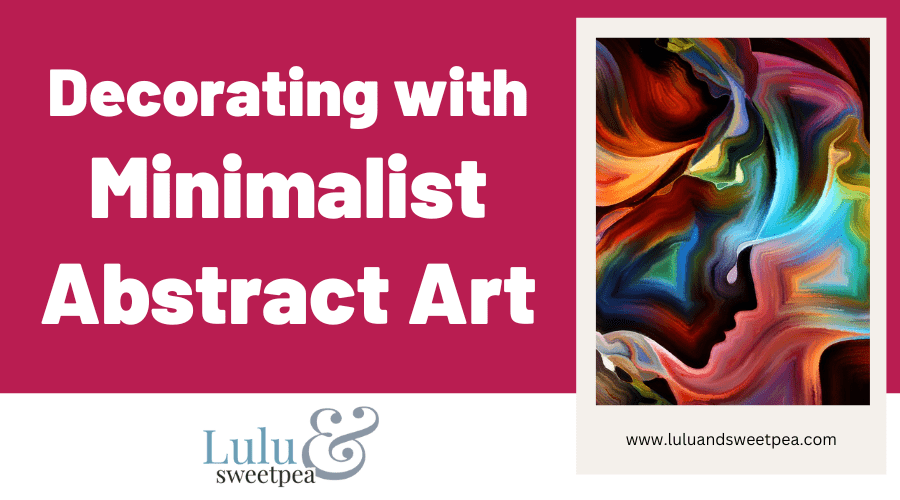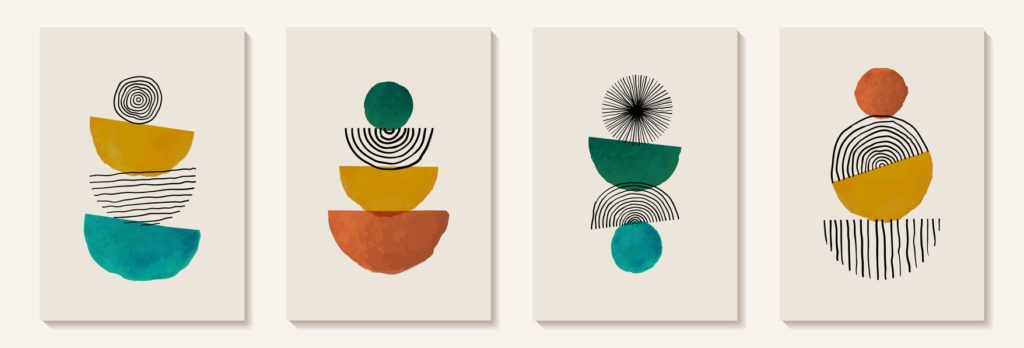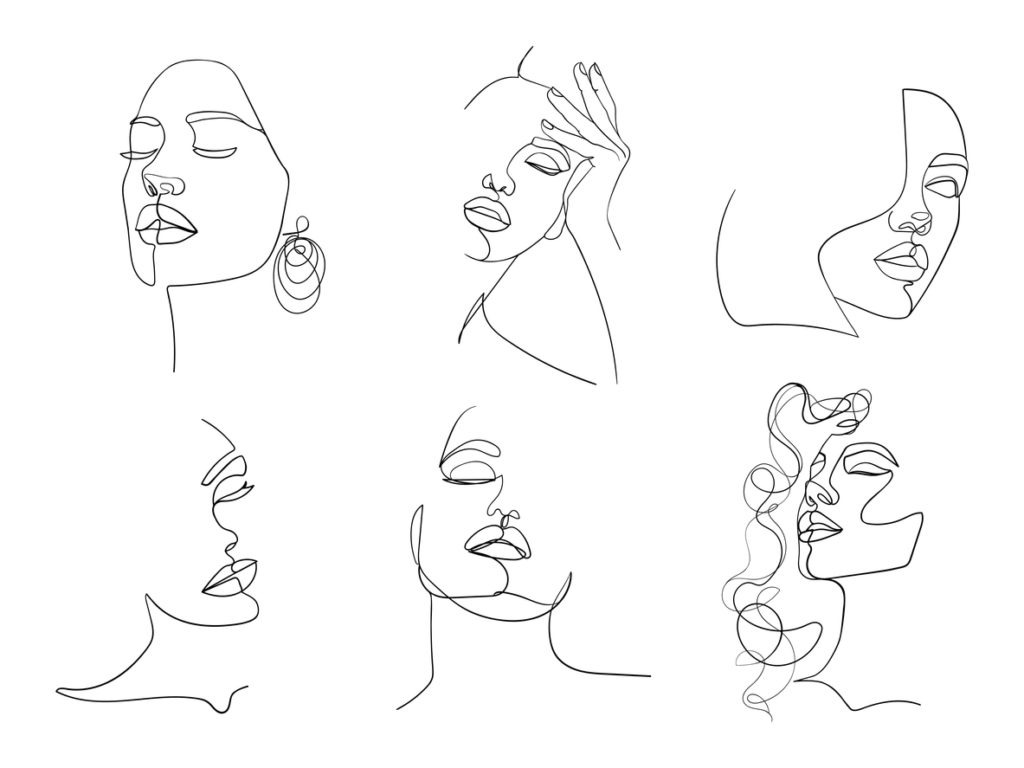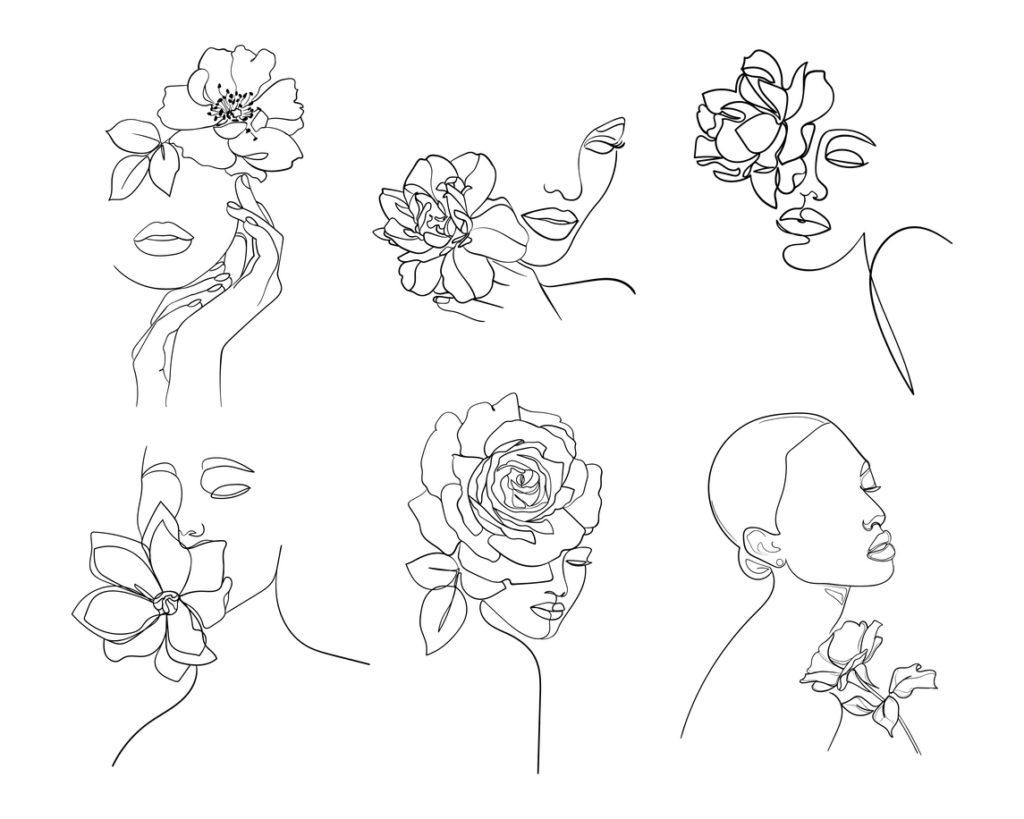One of the best ways to put your personality on a home or apartment is to decorate it. You can discover various designs and ideas in magazines and online. Still, the sheer number of options can be overwhelming. Choosing the right wall decor for your apartment, large home wall, or workplace might be challenging without the right resources. Nonetheless, abstract or minimalist pieces are typically the best bet. They not only provide the visitor food for thought but also impart an air of refined sophistication.
What is Minimalist Abstract Art?
Both Minimalism and minimalist art build upon and refine abstract art’s foundations. Minimalist art is easily recognized by its use of stark, geometric forms. Minimalism, like abstraction, is based on the principle that each work of art must find its unique interpretation rather than merely imitating other styles. The goal of minimalist art is not to accurately portray the world outside the gallery but rather to elicit an emotional response from the viewer based solely on the work’s immediate visual qualities. In the 1960s, when it first emerged, minimalist abstract painting was seen as a dramatic departure from traditional art practices. Sometimes only a few colors were used, and the shapes were primarily squares and rectangles. Minimalist abstract art bares all; no concealed feelings, symbols, or embellishments here. Nothing is hidden; it’s just an uncomplicated work of art.
A Brief History of Minimalist Abstract Art
Midway through the 1960s, the artistic movement known as Minimalism made its debut in the United States as a direct reaction to the avant-garde and conceptual art movements that had come before it. The emerging Minimalists saw the preeminent forms of the time, such as Abstract Expressionism’s focus on emotion and self-expression, as being excessively convoluted, too insular, and beyond the reach of the great majority.
As a result, minimalist painters tried the unthinkable by eliminating any traces of personal meaning from their works of art. By reducing the complexity of their compositions and focusing on the medium and material itself rather than the meaning, they produced groundbreaking art. Their use of form was consistent throughout the media, making their artworks neutral and non-referential.
Characteristics of a Minimalist Abstract Art
Minimalist is described what you see is what you get kind of art. A few of Minimalism’s defining characteristics are flatness, sharpness, and linearity in presentation. Minimalist painters typically eliminated all figurative or ornamental features from their work. To take the mystery out of art by providing a purely visual experience for the audience.
In contrast to the Expressionists and the Abstract Expressionists, the Minimalists attempted to erase all traces of the artist from their works to focus on objective reality and a commitment to logical structure. The goal of a work of minimalist abstract art is to convey a strong emotional response with the fewest possible elements. It’s not hard to understand; all you see are straight lines, geometric shapes, and bright hues. The following are a few different traits of minimalist abstract art: It is characterized by its repetition of geometric forms, its use of basic elements, the absence or minimization of noticeable brush strokes, its precision and mathematical regularity of composition, its hard-edged forms, its monochrome or limited color palette, its lack of expressive content, and its ability to relax the viewer.
Types of Minimalist Abstract Art
Minimalist art marked the end of modernism and the beginning of postmodernism, with far-reaching consequences for the world’s contemporary and graphic artists. Despite its Minimalism, minimalist abstract art comes in various styles. Whether you’re looking for a painting or a line drawing, you’re sure to find something that suits your aesthetic and wall space. Make your minimalist abstract images by freestyling or using a stencil to paint basic geometric forms, lines, and figures.
1. Minimalist Line Art
Minimalist art strips patterns to their barest essentials. Thus, the most basic form of art is a line drawing. The subject of this type of abstract painting is typically a human figure, a complete or partial face, or an object such as a vase or flower that has been represented in simple lines and an abstract form. This type of graphic is frequently monochrome; however, it occasionally incorporates color. In such cases, minimalist line art could be just what you’re searching for because of how well it complements a wide variety of interior design styles.
2. DIY Minimalist Abstract Art
Don’t discount your artistic potential unless you give it a try! Do-it-yourself minimalist abstract art consists of easy-to-create forms, objects, lines, and figures. You could even use spray paint if you wanted to.
3. A Simple Blank Canvas
You can use any color scheme or stick to classic black and white if it suits your taste better. You may take a colorful picture of a fruit, beach, tree, or even just a few blocks of color. A canvas, some paint (acrylic, oil, water-based, or watercolor), and brushes are all you need to unleash your creativity.
4. Modern Minimalist Abstract Art
Minimalist abstract art in the modern era can be interpreted in a few distinct ways. This style can range from a few heavy black lines to an abstract depiction of the sun rising over a mountain range of varying colors. Some are bright and bold, while others are more muted; they’re all incredibly unique and imaginative. You may improve the look of any space in your home, from the living room to the bedroom and even the office, by incorporating a piece of this design’s enduring aesthetic. Depending on your taste, contemporary minimalist art can be as literal or abstract as you wish. Black and white minimalist abstract art is an excellent choice if you want something that will go with anything.
5. Minimalist abstract paintings
Minimalist abstract paintings can be both thought-provoking and visually appealing. Minimalist abstract art paintings are a step forward, whether they feature blocks of blue in a range of tones or a few colorful brushstrokes. Minimalist abstract paintings can be found in various mediums, from oil to watercolor, catering to a wide range of personal preferences. It looks great in any setting, whether you want a smooth or textured version.
6. Black and white minimal abstract art
Black and white minimalist abstract art is an excellent choice if you want something that will go with anything. This minimalist art is easy on the eyes, with its limited color palette and varied brushstrokes. It could be a simplistic mountain scene, a few abstract forms layered with a branch of leaves, or just a few haphazardly placed brushstrokes or lines. This minimalist abstract painting in black, white, and various shades of gray is the perfect addition to any space.
Popular Minimalist Artists and Their Works
There have been numerous influential minimalist artists throughout history.
1. Frank Stella, Black Paintings (1959)
These paintings, are among her most significant, feature a variety of black line forms whose structure is controlled by the canvases rather than emotional meaning.
2. White Flower by Agnes Martin (1960)
Abstract expressionist was a term Agnes Martin used to describe herself. Nonetheless, her minimalistic approach substantially impacted the development of modern and contemporary art. Her exploration of privacy, reflection, and silence is evident in her painted grids, muted backdrops, and delicate geometric patterns. Even after she passed away, her passion for perfection and interest in perspective studies continued to captivate and motivate people. Even though she identified with the geometric abstractionist school, she is widely regarded as a forerunner of Minimalism. White Flower is an excellent grey background with white dashes that stand out against the white lines that join to form the rectangles.
3. Cigarette, by Tony Smith (1961)
Cigarette, an environmental structure designed by Smith, is a 15-foot-tall hollow structure made of twisted, flat steel surfaces. This is the second in a trio of pieces with this design.
4. Wall-Floor Slab, by Robert Morris (1964)
American sculptor Morris used geometry and the careful arrangement of primary forms. The Wall-Floor Slab, one of his early pieces, was a painted rectangle of plywood that, as its name suggests, was simply a flat surface resting on the floor and leaning against a wall.
5. Carl Andre’s Equivalent VIII (1966)
Carl Andre, an American sculptor, typically built his sculptures by stacking blocks of wood, bricks, and metal plates on the floor of his studio. Carl was not interested in the symbolic meanings of his works; instead, he focused on their materiality and the presence of the locations and buildings in which they were placed. He gave up on depicting things and concentrated instead on perception issues. Artist Carl Andre became famous for his minimalist sculptures, which he constructed by assembling unprocessed materials. Equivalent VIII, for instance, consists of two levels of 120 firebricks laid out in a 6′ by 10′ rectangle.
CONCLUSION
Extreme simplicity is celebrated in minimalist art, characterized by a focus on geometric forms, flat colors, and spare line work. Unlike many abstract art forms, minimalist pieces do not invite viewers to dig deeper for hidden significance. This artistic movement emphasizes formal considerations, such as composition and texture, then the artist’s vision.
Minimalist abstract art, on the other hand, tends to be more restrained and sparer. Minimalism is still commonly used to describe works of art that pare down to the barest essentials of shape, color, line, and texture. Minimalist abstract art offers a fascinating and arresting glimpse into the creator’s thoughts. Minimalist abstract art can take any form, from a single line drawing to a vibrant piece of seaside art, and adheres to no predetermined guidelines. You can’t go wrong with this style of art in your home or business; there are many styles to choose from.



